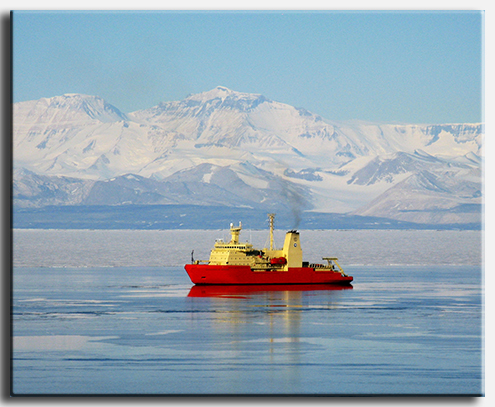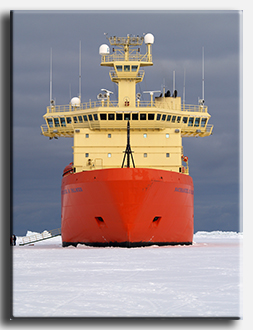R/V Nathaniel B. Palmer

The U.S. Antarctic Programs' research ship Nathaniel B. Palmer in McMurdo Soundwith the Royal Society Range in the background. (NSF photo by Holly Gingles.)
In 1992, Edison Chouest Offshore Inc., Galliano, Louisiana, built and delivered a 94-meter research ship with icebreaking capability for use by the U.S. Antarctic Program for 10 years or more. The charter has been extended and is effect until March 2029. The ship, Nathaniel B. Palmer, is a first-rate platform for global change studies, including biological, oceanographic, geological, and geophysical components. It can operate safely year-round in Antarctic waters that often are stormy or covered with sea ice. It accommodates 37 scientists, has a crew of 22, and is capable of 75-day missions. For ship deck layouts, lab photographs, schedules, equipment, ship-user committee issues and a variety of other information regarding USAP research ships, go to the USAP Vessel Science and Operations web site at http://www.usap.gov/vesselScienceAndOperations/index.cfm?m=3.
The ship is named the Nathaniel B. Palmer to commemorate the American credited with first seeing Antarctica. Nathaniel Brown Palmer, then 21 years old, commanded the 14-meter sloop Hero, which on 16 and 17 November 1820 entered Orleans Strait and came very close to the Antarctic Peninsula at about 63° 45' S. Later in his life, Palmer also won wealth and fame as a pioneer clipper ship master and designer.

USAP's research ship Nathaniel B. Palmer sits in the sea ice in the Ross Sea. (NSF photo by Patrick Rowe.)
